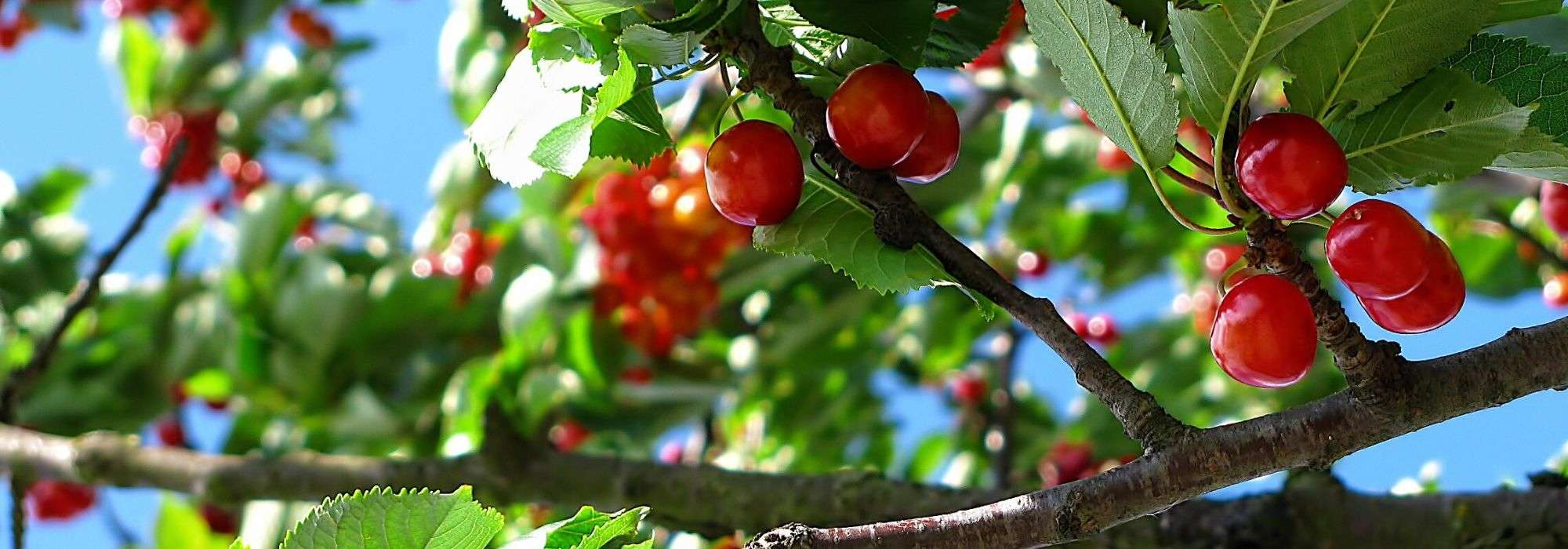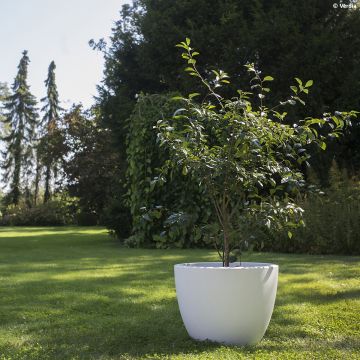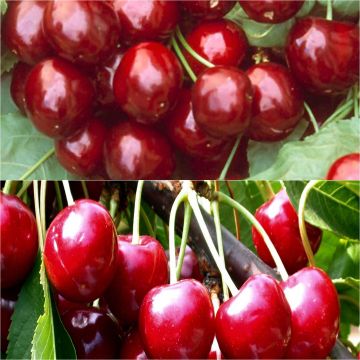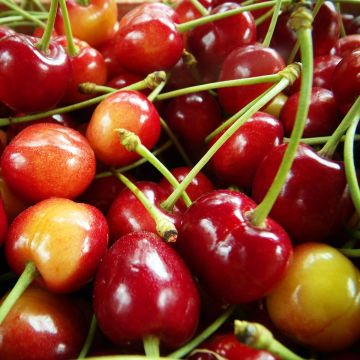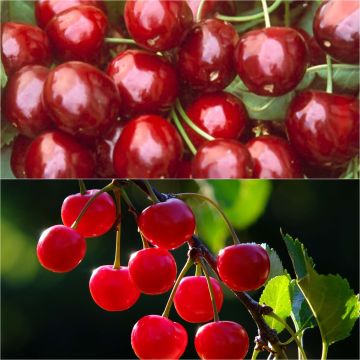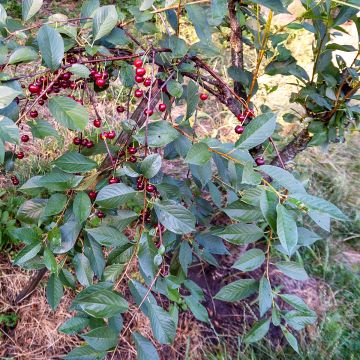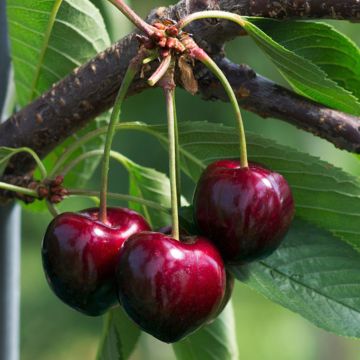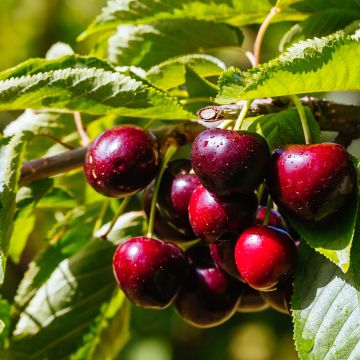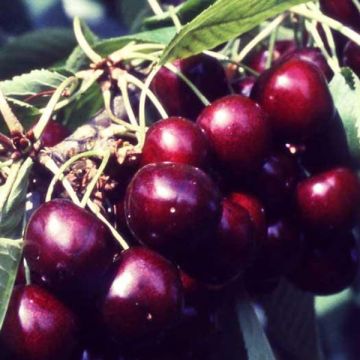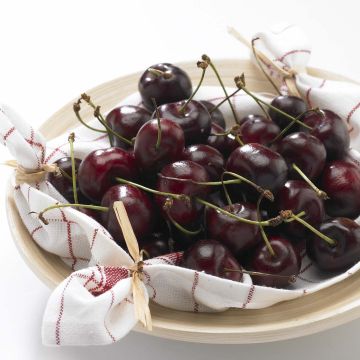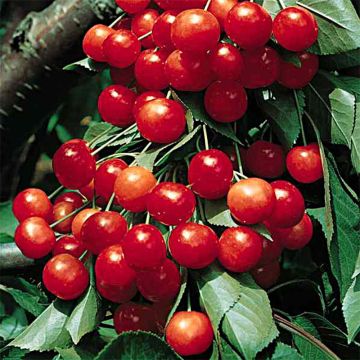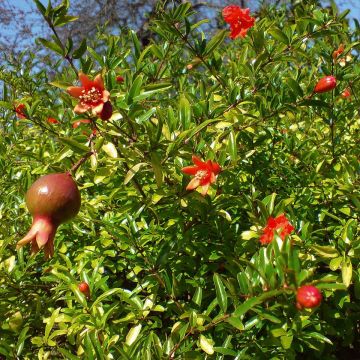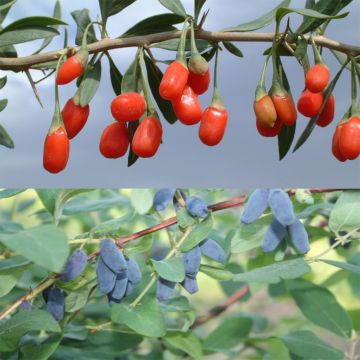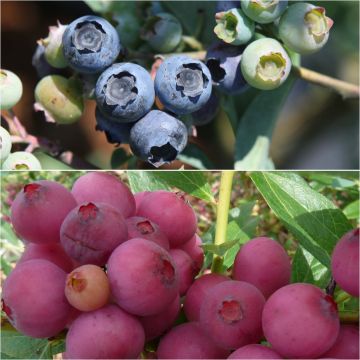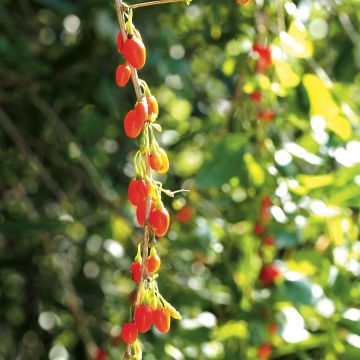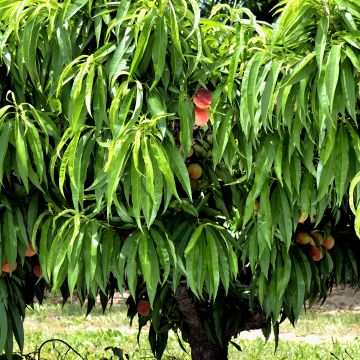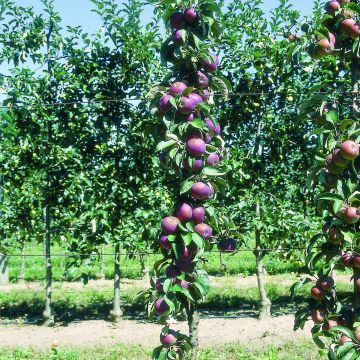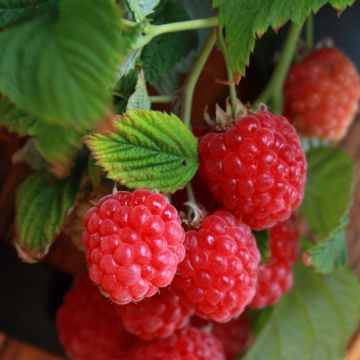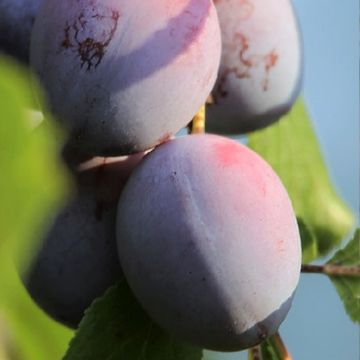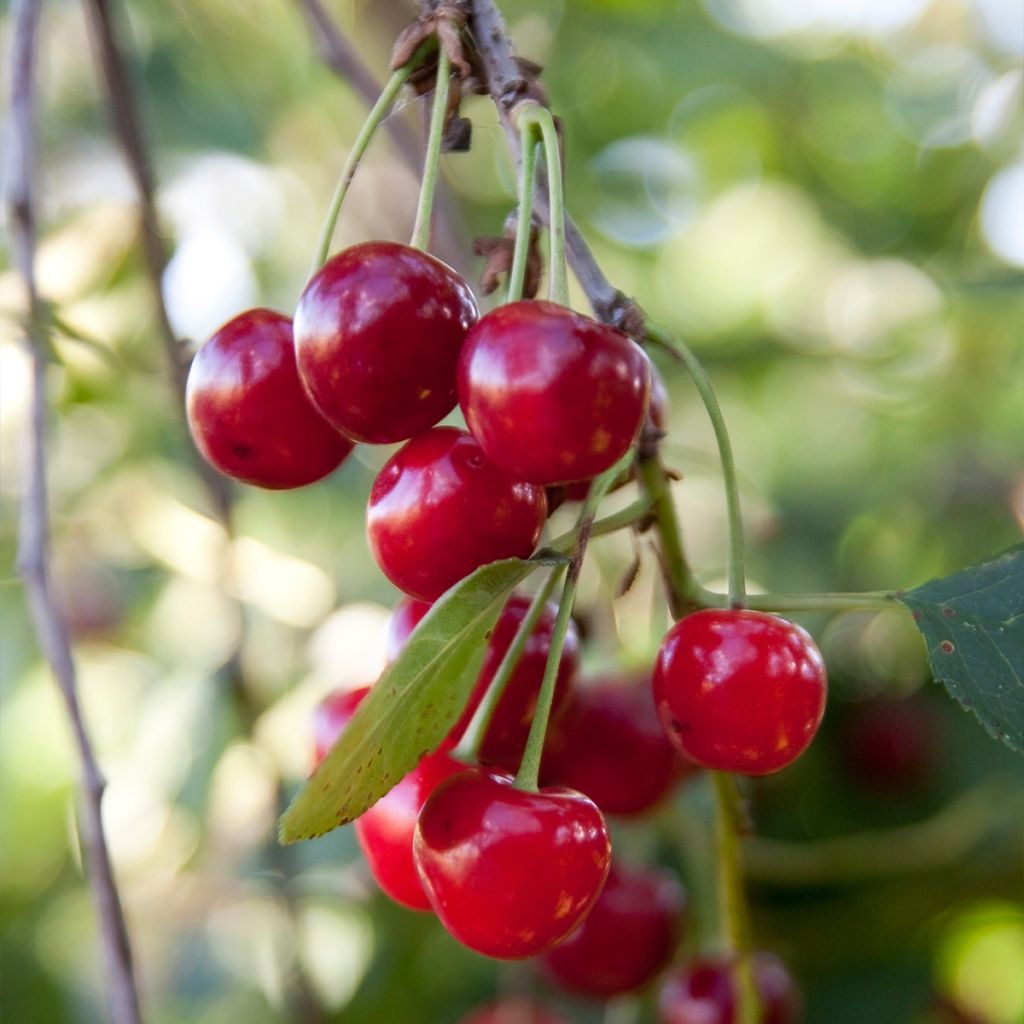

Prunus cerasus Griotella - Tart Cherry Tree
Prunus cerasus Griotella - Tart Cherry Tree
Prunus cerasus Griotella ® Frumi
Sour Cherry, Tart Cherry, Dwarf Cherry, Morello Cherry
Very good quality
christiane, 15/01/2025
Special offer!
Receive a €20 voucher for any order over €90 (excluding delivery costs, credit notes, and plastic-free options)!
1- Add your favorite plants to your cart.
2- Once you have reached €90, confirm your order (you can even choose the delivery date!).
3- As soon as your order is shipped, you will receive an email containing your voucher code, valid for 3 months (90 days).
Your voucher is unique and can only be used once, for any order with a minimum value of €20, excluding delivery costs.
Can be combined with other current offers, non-divisible and non-refundable.
Home or relay delivery (depending on size and destination)
Schedule delivery date,
and select date in basket
This plant carries a 6 months recovery warranty
More information
We guarantee the quality of our plants for a full growing cycle, and will replace at our expense any plant that fails to recover under normal climatic and planting conditions.
Description
Prunus cerasus Griotella Frumi is a self-fertile variety, selected by George Delbard. It is a dwarf cherry tree highly appreciated by gardeners for its habit and multiple ornamental uses in open ground or in pots on a patio or balcony. Its compact size and slightly weeping habit make it the champion of cherry trees, facilitating picking. The Griotella Dwarf Cherry tree blooms in March and generously produces juicy, fleshy, and fragrant red drupes in July. Also known as griotte, the tangy fruits have many uses in cooking, delicious in sweet pastries as well as accompanying savory dishes. Planting is recommended in autumn. Its good cold resistance and ability to grow in all types of soils, except for overly clay soils, make it easy to establish the Griotella Cherry tree in all regions.
The flowers of the Griotella Dwarf Cherry tree appear as early as March before the leaves bud. This flowering, composed of white flowers grouped in clusters, is always a dazzling sight, announcing the end of winter. In the garden, the flowering Griotella tree is very attractive to bees, which readily gather nectar from it. The reddish wood characterizes it as a member of the cherry family. In July, this Griotella tree produces an abundant crop of smaller red fruits than sweet cherries, with firm and juicy flesh. The fruit is attached to the branch by a short petiole measuring 1 to 2 cm (0.5 to 1in) long. The deciduous foliage is light green and takes on shades of brown-orange in autumn.
Prunus cerasus belongs to the Rosaceae family, also known as the Griotella or Sour Cherry tree. It is native to Asia Minor and is widely grown in Europe. Hardy, it withstands cold temperatures and adapts well to all regions. If grown in a pot, it is advisable to protect it during cold periods. It prefers a sunny exposure, slightly sheltered from the wind. It adapts to all types of soil, even slightly calcareous, except for overly clay soils. The Griotella Frumi variety is distinguished by its slightly weeping rounded habit and does not exceed 1.5 to 2.00 metres (5 to 7 feet) in height.
The fruit or drupe of the Griotella Dwarf Cherry tree is rich in antioxidants, making it beneficial for health. It can be enjoyed raw on the tree, but the griotte reveals its flavors in cooking to enhance sweet pastries or savoury dishes, or simply as jam.
To ensure successful establishment, this fruit tree is delivered with a 'ready-to-plant' root ball. At planting, the root ball should be directly planted with the biodegradable tontine that surrounds and protects the root system. This protection will decompose on its own during the first months of planting.
Prunus cerasus Griotella - Tart Cherry Tree in pictures
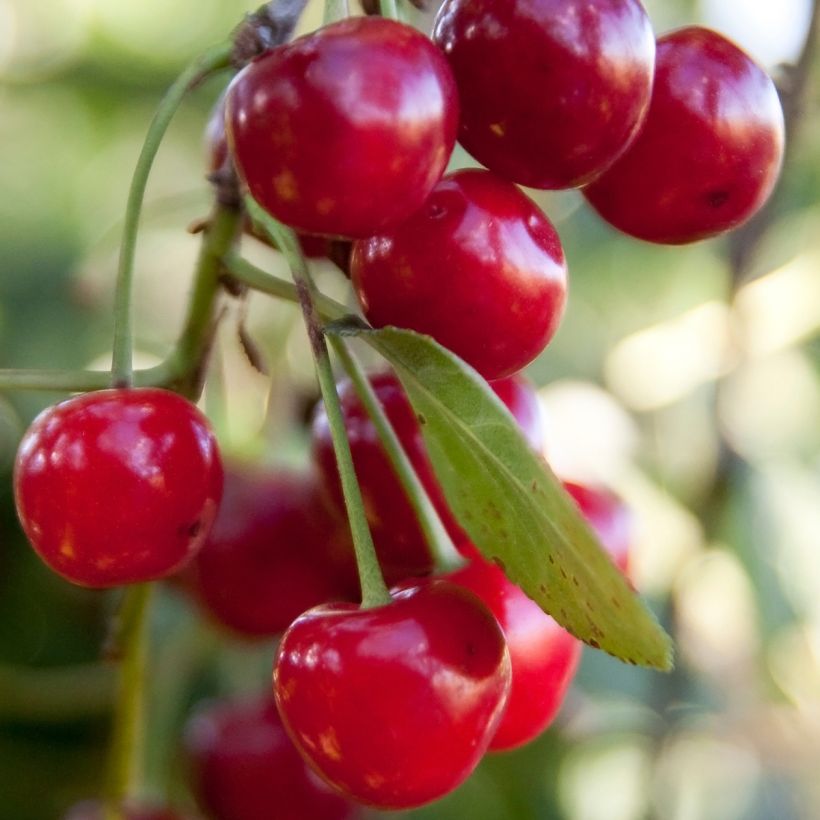

Plant habit
Fruit
Flowering
Foliage
Botanical data
Prunus
cerasus
Griotella ® Frumi
Rosaceae
Sour Cherry, Tart Cherry, Dwarf Cherry, Morello Cherry
Cultivar or hybrid
Other Cherry trees
View all →Planting and care
Easy to grow, the Cherry tree thrives in all types of soil, whether acidic or chalky. It prefers moist, light soils and is susceptible to heavy, clay soils. Choose a sunny location. To minimize the risk of late frost damage to the flowers, it is recommended to plant the Cherry tree in a sheltered position, facing west and protected from cold winds in regions that experience spring frosts. Planting is preferably done in autumn. If you plant multiple trees, space them 1 meter (3 feet) apart for dwarf varieties.
Loosen the soil deeply, remove rocks and unwanted weeds. Add some sand to improve drainage. Dig a hole 4 to 5 times the volume of the root ball. Make sure to separate the subsoil from the topsoil. Mix bonemeal or well-rotted compost or potting soil with the subsoil and pour this mixture into the planting hole. Install a stake. Place the root ball, cover with the topsoil and firm it down. Water generously (about 10 litres). Attach the stake to the tree, crossing the tie in a figure-eight shape, without touching the trunk.
During cultivation, watering is not necessary except in case of extreme heat. Mulch at the base to retain moisture during summer. Protect your harvest by using either a bird net, aluminum foil or old CDs. In case of aphid attack, spray with soapy water.
For container planting: place a layer of gravel or clay pebbles at the bottom of the pot to facilitate drainage. Add a layer of soil and then place the plant, covering it with a mixture of 2/3 garden soil and 1/3 well-rotted compost or potting soil. Every spring, remove the top layer and replace it with fresh potting soil. Water regularly and moderately. In late autumn, protect the pot with insulation before winter frosts set in.
Planting period
Intended location
Care
Planting & care advice
-
, onOrder confirmed
Reply from on Promesse de fleurs
Similar products
Haven't found what you were looking for?
Hardiness is the lowest winter temperature a plant can endure without suffering serious damage or even dying. However, hardiness is affected by location (a sheltered area, such as a patio), protection (winter cover) and soil type (hardiness is improved by well-drained soil).

Photo Sharing Terms & Conditions
In order to encourage gardeners to interact and share their experiences, Promesse de fleurs offers various media enabling content to be uploaded onto its Site - in particular via the ‘Photo sharing’ module.
The User agrees to refrain from:
- Posting any content that is illegal, prejudicial, insulting, racist, inciteful to hatred, revisionist, contrary to public decency, that infringes on privacy or on the privacy rights of third parties, in particular the publicity rights of persons and goods, intellectual property rights, or the right to privacy.
- Submitting content on behalf of a third party;
- Impersonate the identity of a third party and/or publish any personal information about a third party;
In general, the User undertakes to refrain from any unethical behaviour.
All Content (in particular text, comments, files, images, photos, videos, creative works, etc.), which may be subject to property or intellectual property rights, image or other private rights, shall remain the property of the User, subject to the limited rights granted by the terms of the licence granted by Promesse de fleurs as stated below. Users are at liberty to publish or not to publish such Content on the Site, notably via the ‘Photo Sharing’ facility, and accept that this Content shall be made public and freely accessible, notably on the Internet.
Users further acknowledge, undertake to have ,and guarantee that they hold all necessary rights and permissions to publish such material on the Site, in particular with regard to the legislation in force pertaining to any privacy, property, intellectual property, image, or contractual rights, or rights of any other nature. By publishing such Content on the Site, Users acknowledge accepting full liability as publishers of the Content within the meaning of the law, and grant Promesse de fleurs, free of charge, an inclusive, worldwide licence for the said Content for the entire duration of its publication, including all reproduction, representation, up/downloading, displaying, performing, transmission, and storage rights.
Users also grant permission for their name to be linked to the Content and accept that this link may not always be made available.
By engaging in posting material, Users consent to their Content becoming automatically accessible on the Internet, in particular on other sites and/or blogs and/or web pages of the Promesse de fleurs site, including in particular social pages and the Promesse de fleurs catalogue.
Users may secure the removal of entrusted content free of charge by issuing a simple request via our contact form.
The flowering period indicated on our website applies to countries and regions located in USDA zone 8 (France, the United Kingdom, Ireland, the Netherlands, etc.)
It will vary according to where you live:
- In zones 9 to 10 (Italy, Spain, Greece, etc.), flowering will occur about 2 to 4 weeks earlier.
- In zones 6 to 7 (Germany, Poland, Slovenia, and lower mountainous regions), flowering will be delayed by 2 to 3 weeks.
- In zone 5 (Central Europe, Scandinavia), blooming will be delayed by 3 to 5 weeks.
In temperate climates, pruning of spring-flowering shrubs (forsythia, spireas, etc.) should be done just after flowering.
Pruning of summer-flowering shrubs (Indian Lilac, Perovskia, etc.) can be done in winter or spring.
In cold regions as well as with frost-sensitive plants, avoid pruning too early when severe frosts may still occur.
The planting period indicated on our website applies to countries and regions located in USDA zone 8 (France, United Kingdom, Ireland, Netherlands).
It will vary according to where you live:
- In Mediterranean zones (Marseille, Madrid, Milan, etc.), autumn and winter are the best planting periods.
- In continental zones (Strasbourg, Munich, Vienna, etc.), delay planting by 2 to 3 weeks in spring and bring it forward by 2 to 4 weeks in autumn.
- In mountainous regions (the Alps, Pyrenees, Carpathians, etc.), it is best to plant in late spring (May-June) or late summer (August-September).
The harvesting period indicated on our website applies to countries and regions in USDA zone 8 (France, England, Ireland, the Netherlands).
In colder areas (Scandinavia, Poland, Austria...) fruit and vegetable harvests are likely to be delayed by 3-4 weeks.
In warmer areas (Italy, Spain, Greece, etc.), harvesting will probably take place earlier, depending on weather conditions.
The sowing periods indicated on our website apply to countries and regions within USDA Zone 8 (France, UK, Ireland, Netherlands).
In colder areas (Scandinavia, Poland, Austria...), delay any outdoor sowing by 3-4 weeks, or sow under glass.
In warmer climes (Italy, Spain, Greece, etc.), bring outdoor sowing forward by a few weeks.






























